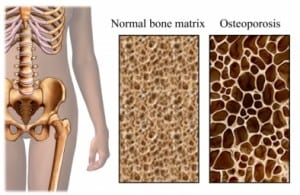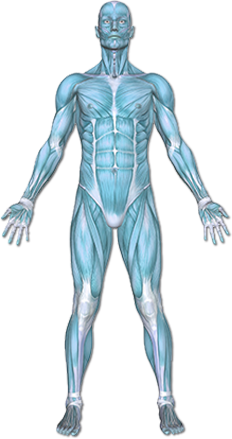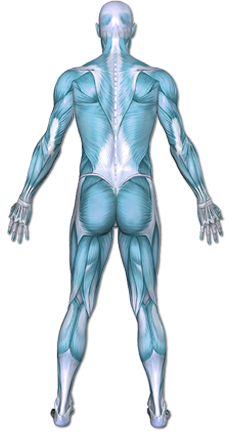Osteoporosis
Osteoporosis occurs when bones become weak and brittle. If left unchecked, it can lead to fracture. Any bone can be affected. Fractures of special concern are of the hip, spine, and wrist.


Copyright © Nucleus Medical Media, Inc.
This content was created using EBSCO’s Health Library
Throughout life, old bone is removed and new bone is added to the skeleton. After age 30, more bone is lost than replaced. If too much bone loss occurs, this may lead to osteoporosis. Osteoporosis is more likely to occur if full bone mass was not achieved during the bone-building years.
This content was created using EBSCO’s Health Library
Osteoporosis is more common in women than in men. Other factors that may increase your chance of developing osteoporosis include:
- Increasing age
- Low weight
- Smoking
- Alcohol abuse
- History of falls
- Family history of osteoporosis
- Postmenopausal status
- Certain conditions, such as:
- Rheumatoid arthritis
- Amenorrhea (no menstrual periods)
- Hyperthyroidism
- Type 2 diabetes
- Asthma
- Liver disease
- Eating disorder
- Depression
- Crohn’s disease
- Use of certain medications, such as antidepressants, long-term Heparin, corticosteroids, anticonvulsants, or antacids
- Low hormone levels (low estrogen levels in women, low testosterone levels in men)
- Inactive lifestyle
- Certain restrictive diets that may result in a deficit of calcium or vitamin D
- Too little sunlight (the effect of sun on the skin is a primary source of vitamin D)
- Certain cancers, including lymphoma and multiple myeloma
This content was created using EBSCO’s Health Library
In most cases, people with osteoporosis remain symptom-free until there is a fracture. In those that do have symptoms, osteoporosis may cause:
- Severe back pain with fracture of the vertebrae, wrists, hips, or other bones
- Loss of height with stooped posture, a condition called kyphosis
This content was created using EBSCO’s Health Library
Your doctor will ask about your symptoms and medical history. A physical exam will be done. Tests may include:
- Blood tests
- Urine tests
Osteoporosis can be seen with bone mineral density (BMD) tests of the hip, spine, wrist, or other site. These may include:
- Central (preferred) or peripheral dual-energy x-ray absorptiometry (DXA)
- Quantitative ultrasound (QUS)
- Central or peripheral quantitative CT scan (QCT)
This content was created using EBSCO’s Health Library
In the case of osteoporosis, exercise is believed to increase bone mineral density and muscle strength, potentially also increasing coordination and balance. The overall effect is to decrease the risk of fracture and subsequent disability. A physical therapist will develop an individual exercise program for combating osteoporosis. These programs vary in their level of difficulty and dedication. You will decide, in conjunction with the therapist, which is most appropriate for you. Remember, your persistence in performing the exercise program regularly as prescribed is imperative: no exercise program will help without your dedication. AN EVALUATION MAY INCLUDE
- Medical & exercise history
- Strength & flexibility testing
- Assessment of functional limitations
- Posture & gait assessment
PHYSICAL THERAPY GOALS MAY INCLUDE
- Individualized exercise program
- Correction & education in good posture & body mechanics
- Knowledge of risk factors
- Instruction in activities of daily living
- Balance & gait training if needed
This content was created using EBSCO’s Health Library
Building strong bones throughout your early years is the best defense against osteoporosis. Getting enough calcium, vitamin D, and regular exercise can keep bones strong throughout life. To help reduce your chance of developing osteoporosis, take these steps:
- Eat a balanced diet rich in calcium and vitamin D
- Perform weight-bearing exercise
- Live a healthy lifestyle (no smoking, drink alcohol only in moderation)
- If you are a post-menopausal woman at high risk for bone fractures, medications may be appropriate to prevent osteoporosis
This content was created using EBSCO’s Health Library
This content was created using EBSCO’s Health Library
RESOURCES:
- NIH Osteoporosis and Related Bone Diseases National Resource Center
- National Osteoporosis Foundation
CANADIAN RESOURCES:
- Osteoporosis Canada
- Women’s Health Matters
http://www.womenshealthmatters.ca
REFERENCES:
- Clinician’s guide to prevention and treatment of osteoporosis. National Osteoporosis Foundation website. Available at: http://www.nof.org… . Updated 2013. Accessed July 22, 2013.
- Ho-Pham LT, Nguyen ND, et al. Effect of vegetarian diets on bone mineral density: a Bayesian meta-analysis. Am J Clin Nutr . 2009;90:943-950.
- Khosla L, Melton LJ. Clinical practice: osteopenia. N Engl J Med . 2007;356:2293-2300.
- Making a diagnosis. National Osteoporosis Foundation website. Available at: http://nof.org/articles/8 . Accessed July 22, 2013.
- Osteoporosis. EBSCO DynaMed website. Available at: http://www.ebscohost.com/dynamed/what . Updated July 15, 2013. Accessed July 22, 2013.
- Sambrook P, Cooper C. Osteoporosis. Lancet . 2006;367:2010-2018.
- 10/6/2006 DynaMed’s Systematic Literature Surveillance http://www.ebscohost.com/dynamed/what : Cockayne S, Adamson J, Lanham-New S, et al. Vitamin K and the prevention of fractures: systematic review and meta-analysis of randomized controlled trials. Arch Intern Med . 2006;166:1256-1261.
- 5/16/2008 DynaMed’s Systematic Literature Surveillance http://www.ebscohost.com/dynamed/what : Qaseem A, Snow V, Shekelle P, Hopkins R Jr, Forciea MA, Owens DK; Clinical Efficacy Assessment Subcommittee of the American College of Physicians. Screening for osteoporosis in men: a clinical practice guideline from the American College of Physicians. Ann Intern Med . 2008;148:680-684.
- 1/30/2009 DynaMed’s Systematic Literature Surveillance http://www.ebscohost.com/dynamed/what : Loke YK, Singh S, Furberg CD. Long-term use of thiazolidinediones and fractures in type 2 diabetes: a meta-analysis. CMAJ . 2009;180:32-39. Epub 2008 Dec 10.
- 12/29/2009 DynaMed’s Systematic Literature Surveillance http://www.ebscohost.com/dynamed/what : Hippisley-Cox J, Coupland C. Predicting risk of osteoporotic fracture in men and women in England and Wales: prospective derivation and validation of QFractureScores. BMJ . 2009;339:b4229.
- 6/4/2010 DynaMed’s Systematic Literature Surveillance http://www.ebscohost.com/dynamed/what : FDA approves new injectable osteoporosis treatment for postmenopausal women. US Food and Drug Administration website. Available at: http://www.fda.gov… . Updated April 23, 2013. Accessed July 22, 2013.
This content was created using EBSCO’s Health Library


